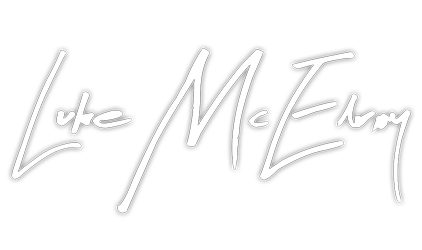I’ve been writing and reflecting a lot lately on creative team personalities. And I recently wrote an article on TripleWide Media’s (here’s the post) that got a lot of attention. In fact, even though it was written in December, it was still one of the most read posts from the entire year! So I thought I would expand here on The 5 Creative Personalities that you need on your team in order to be well rounded and set up for success. But before I begin, I need to give credit where credit is due. This list is a modified version from Stephen Brewster, who I heard first share this at the Salt Conference in Nashville.
5 Creative Personalities #1: ARTIST.
This is the person we most identify with the ideation process of creativity. Like any of the 5 creative personalities, we all have various strengths and weaknesses.
Strengths:
- This person will initiate ideas and spark some of your best work.
- This team member’s personality is not only essential, it’s contagious.
- This creative will seem like the energizer bunny in the right environment, and empowered the more they can create.
- Blank pages will never scare this person. It’s their lifeblood.
- They’re comfortable with the pressure of “okay, give me an idea!”.
Weaknesses:
- They won’t want to wait to hear how to make an idea better.
- This person will likely not know how to execute an idea, let alone care how it’s executed.
- Their ideas are never hindered by budget or time, which could be a bad thing.
- The love the unknown, and bring a good deal of risk to any creative process.
This is why an artist is one of the 5 creative personalities you need on your team.
Creative Personalities #2: ANALYZER.
The important role of helping turn a mysterious cloud-like concept into reality and putting structure to it. They are analyzer’s because they can see the vision, and “translate” for the group when the artist can’t communicate well enough to sell the idea.
Strengths:
- They are the designer, not by means of pixels and paint, but they can see the connection of ideas and know how to shape it into a plan.
- Analyzers create method out of chaos, by grabbing the baton from the Artist in the creative process.
- These are the problem solvers, the deeper thinkers, the path maker and the one who will help find direction for the team.
- Engineering is their art form.
- Often some of the smartest people on the team.
Weaknesses:
- Their tendency to run independently.
- Lack of appreciate for ideation process. They just want to design the plan, they’re likely to check out during that first stage of creativity.
- Their intellect can cause isolation, and naturally feel like an outsider to the team.
- Since their art is the plan, they become offended the most by the antagonist.
Analyzers can feel isolated, so it’s imperative that this person is encouraged to spend a lot of time with another one of the 5 creative personalities – the advocate.
Creative Personalities #3: ACTIVATOR.
The activator is the most important role of the team, and often not a single person, which means this isn’t the most important person but role. They get the job done; they live in the making (versus the creating, designing or evaluating). They are also among the most rare in creative organizations.
Strengths:
- These are high drivers on the team, often the most eager to see results.
- They make ideas happen.
- This person may not be a “leader” but they are most goal-oriented. Easy to keep on task.
- Master of To-Do lists and meeting deadlines.
- Highly focused individuals with systems for executing ideas.
Weaknesses:
- Get frustrated quickly with artists.
- Most likely to become burnt out.
- Expect the credit on a project since they actually did the work (if there are not enough of them on a team).
- They regard a project being complete as more important than it being done the best way it could possibly be done.
- Innovation is not a positive concept for them, they want order and a system
As I have taught these 5 creative personalities to people across the United States, I hear that this is the most void personality type in a team. They’re so important, but they often aren’t looked at in a creative process.
Creative Personalities #4: ANTAGONIST.
The antagonist is the one who challenges and improves ideas, and they love the idea of excellence (maybe even perfection).
Strengths:
- Demand excellence and don’t tolerate mediocrity.
- Can see creativity from all angles of perspective, which adds great insight to team.
- They are the iron that sharpens the other iron on the team.
- The antagonist is the person(s) on the team who will stop a bad project from shipping.
- They are the craftsman, who take immense pride in the final product.
Weaknesses:
- They will say no to a lot of ideas or plans.
- As they challenge status quo, the team may see them as having a “negative nancy” personality.
- Extremely critical and dissatisfied with any idea that already exists.
- Perceived as the speed-bumps and road blocks in the creative process.
- Antagonist’s will frustrate the entire team because they will say something isn’t working without a clear plan to fix it (remember, that’s the Analyzer’s role).
It’s easy to want to avoid letting the antagonist into your process, as no one likes being told the work they’ve spent a considerable amount of time on has a lot of flaws, but this group of people are imperative to the creative process. Of all the 5 creative personalities I talk about, this is the personality type that needs to be most protected of and from. Therefore any leader of a creative team must be aware that the antagonist is an incredibly important role, but if they’re in too much of the process, it will stifle creativity. At times it’s appropriate to move on without their suggestion of improvement.
Creative Personalities #5: ADVOCATE.
When you have all 5 creative personalities, it’s the advocate who maintains peace in the community and helps keep the team together during fights, fires and failures.
Strengths:
- Genuinely care about people over products.
- Great encouragers and morale builders for any team or individual.
- Some of the best friends (which means they know everyone), to any on the team, and therefore garner immense respect among peers.
- Provide balance in seasons of tension.
- The lead and live from their heart, not their mind.
- Fight to make sure every voice is heard on the team, and maintain the various roles on the team.
Weaknesses:
- The least artistic of the creative team, but still creative. (They don’t see themselves as “artists” but rather want to help and encourage “art” made by artists)
- They will sacrifice their opinion to avoid instigating confrontation.
- They are often the easiest to be offended, because of their keen awareness of people and the impact of words.
- Rarely a leader, and hesitant to make a decision for the team.
- It’s difficult for them to stand up for themselves, mainly because they typically stand up for everyone else.
The advocate is the great shepherd on your team who will leave the 99 to go find and care for the one. Because they’re wired to make sure everyone else’s voice is heard, they will rarely desire to be heard. As leaders of any creative process, make sure you are the advocate’s advocate. Listen to their gut, as it’s a good indication of the team headed in an unhealthy direction.
As you can tell, no matter how large your team, all 5 creative personalities are vital to creating great products, experiences, services, ideas or content. All of these personalities can (and do) clash with one another, and that’s not by mistake. When there is trust within a team of various creative personalities, conflict is nothing but the pursuit of the best possible solution. Without trust, conflict breeds politics in an organization.
It’s through trust that a foundation for healthy conflict exists. If you’re the leader of your creative team, it’s imperative that you protect, champion and fight for all 5 creative personalities to be present throughout the entire process.
Trust is the foundation for healthy conflict.

